
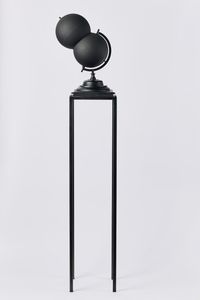
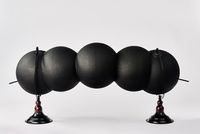
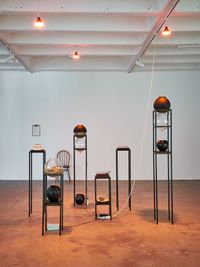
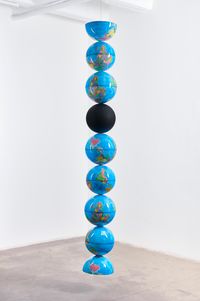
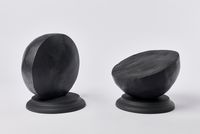
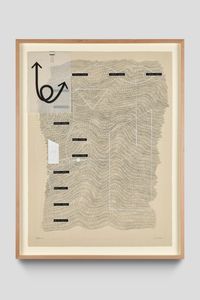

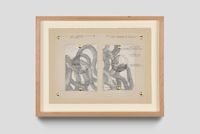
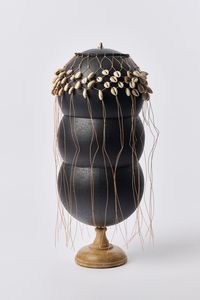
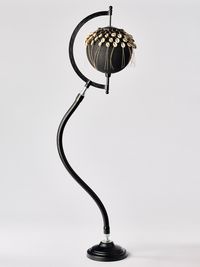
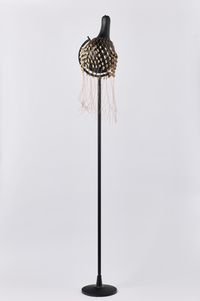
Goodman Gallery is pleased to present conditions, Nolan Oswald Dennis' third solo exhibition with Goodman Gallery.
The exhibition presents a new series of works centred around the figure of the globe. Incorporating the shape into various configurations, Dennis presents different perspectives on our familiar world as a means toward imagining new possibilities.
'Within this burning planet has always existed another world, and the struggle to realise it,' says Dennis. 'The logic of colonial cosmology insists on the universality of the Western world: a planet rendered as private property, as social violence, as deliberate crisis. Occupying the same space and time as the colonial planet are other worlds. A planet rendered whole as indigenous land and life; a queer planet rendered just, feminist, socialist; a planet facing south, and east, and waterward. Altogether an ecology of black planets—a black cosmography (where black is a vector that opens toward hidden conditions of space and time).'
The spherical globe is the idealised figure of the planet in Western cosmology: seamless, smooth, unitary and knowable. Counter to this image of the world, Dennis proposes a series of transformations of the sphere, distorting and stretching the model in order to find space for other worlds, otherworldly possibilities.
In reality, the geometry of the globe is a more imperfect spheroid shape. In deviating from the prevailing platonic sphere by abstracting the classic colonial image of the globe, we move 'closer to the shape of the actual planet,' says Dennis. 'Which is to say the planet as a complex topological figure which emerges from and merges with the world it prefigures. Our task has always been to complicate that figure, to configure the planet in such a way that it can hold other worlds.'
A number of abstracted globes included in the exhibition help articulate this position. These sculptural models form part of a series titled 'a black cosmography', which reference planetary images from popular culture, in particular Public Enemy's album 'Fear of a Black Planet' (1990) and The Brother Moves On album, 'A New Myth' (2013). In addition, the globes draw on the dark matter hypothesis in the standard model of particle physics as well as multiverse theory in cosmology.
Dennis adopts a systems-based approach to conceive of new models for envisioning the planet and world it contains. For conditions, Dennis grounds this in a new earth-system model called a garden for fanon. The work—an extension of the ongoing research project 'a curriculum for mud' started in 2017 at the Massachusetts Institute of Technology—looks at soil as a complex model for social and political life on this planet. This is achieved using a bio-technical apparatus that turns texts from the black liberation archive into soil in collaboration with a community of eisnia foetida earthworms.
For the duration of the exhibition, the worms will consume the cellulose fibre of the books, converting these into flesh, energy, heat and worm castings that fertilise the soil. In doing so, the work acts as a gesture toward 'sharing knowledge with soil, worms, and the earth itself, set[ting] up conditions of possibility in which an expanded collective can consider the world otherwise.'
As with any system, a series of protocols are essential to the management of this work. Alongside maintaining a consistent temperature and light frequency, a set of 'care protocols' are to be enacted. These will take the form of a series of readings, where invited participants will be asked to recite extracts from texts used in the work, to the worms as well as a small group of people.
A series of new drawings and diagrams are presented as annotations to these models and systems.
Press release courtesy Goodman Gallery.
163 Jan Smuts Avenue
Parkwood
Johannesburg, 2193
South Africa
www.goodman-gallery.com
+27 117 881 113
+27 117 889 887 (Fax)
Tues - Fri, 8:30am - 5pm
Sat, 8:30am - 4pm